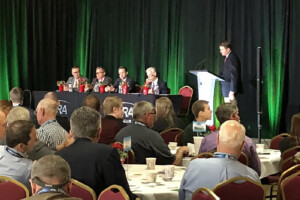by Heather Jennings, PE

I recently completed a year-long study on a municipal lagoon that accepted some waste from food processors. We sludge judged the lagoon as well as looked at the bioactivity throughout the water column by quarterly measurement of the ATP for a year. The highest level of bioactivity was in the sludge layer!
Over the year, we saw that toxic/septic impacts also inhibited the bioactivity of this layer, although delayed compared with the rest of the water column. What was exciting was seeing how the bioactivity increased as the sludge was stimulated with our Bio Energizer® product. Toward the end of the year of Bio Energizer® application, the bioactivity dropped but it correlated with the reduction of the organics in the sludge layer. Which makes sense: less biomass, less bioactivity.
Overall, it was very exciting to see how bioactive the sludge layer was and that, when it is stimulated, it can bioremediate the organics itself with just a little biostimulant push.
Complete the form below to download/read the complete white paper,
“Lagoons: Under the Surface.
(32 pages, 34 figures, 37 tables)
Related Posts

This Week In Ag #92
Should regenerative agriculture resemble a Chinese menu, where you freely pick and choose the ingredients you want to include or eliminate from your entrée, rather than taking a holistic approach? That depends on your perspective of regen farming.

Arizona Agribusiness Roundtable
We at BHN/Huma Gro® were very pleased to be a sponsor for the Arizona Agribusiness Roundtable on December 4 at the PERA Club in Tempe. This year’s roundtable was titled, “A National Perspective on Agriculture: The Farm Bill and You.” The Agribusiness Roundtable is a collaborative effort by the Arizona Department of Agriculture and the

From the Field: Why I Switched to MICROHUMIC® OM for Seed Lubrication
As a farmer and ag salesman at Huma, I’m always on the lookout for products that can make farming easier and more efficient. That’s how I first came across MICROHUMIC® OM at the 2024 Commodity Classic, right after I joined Huma. While working in our booth, I was chatting with our CEO, Lyndon Smith, when

